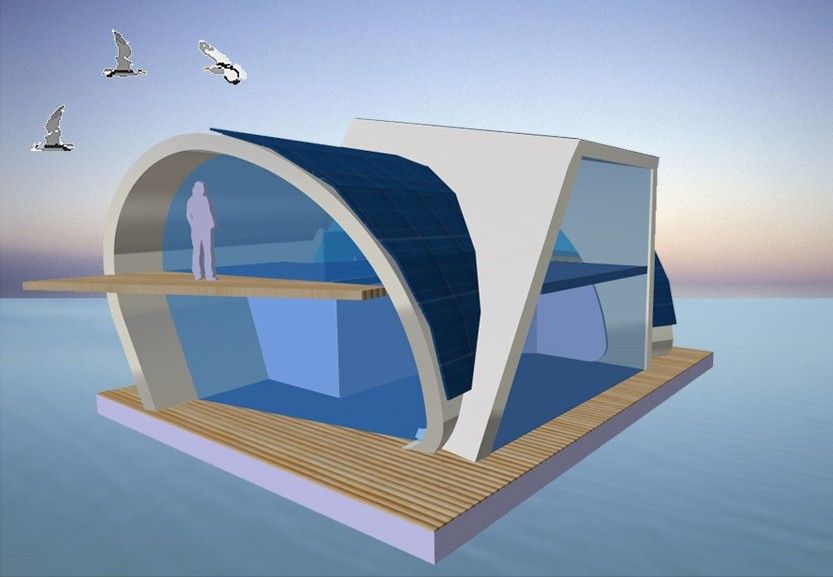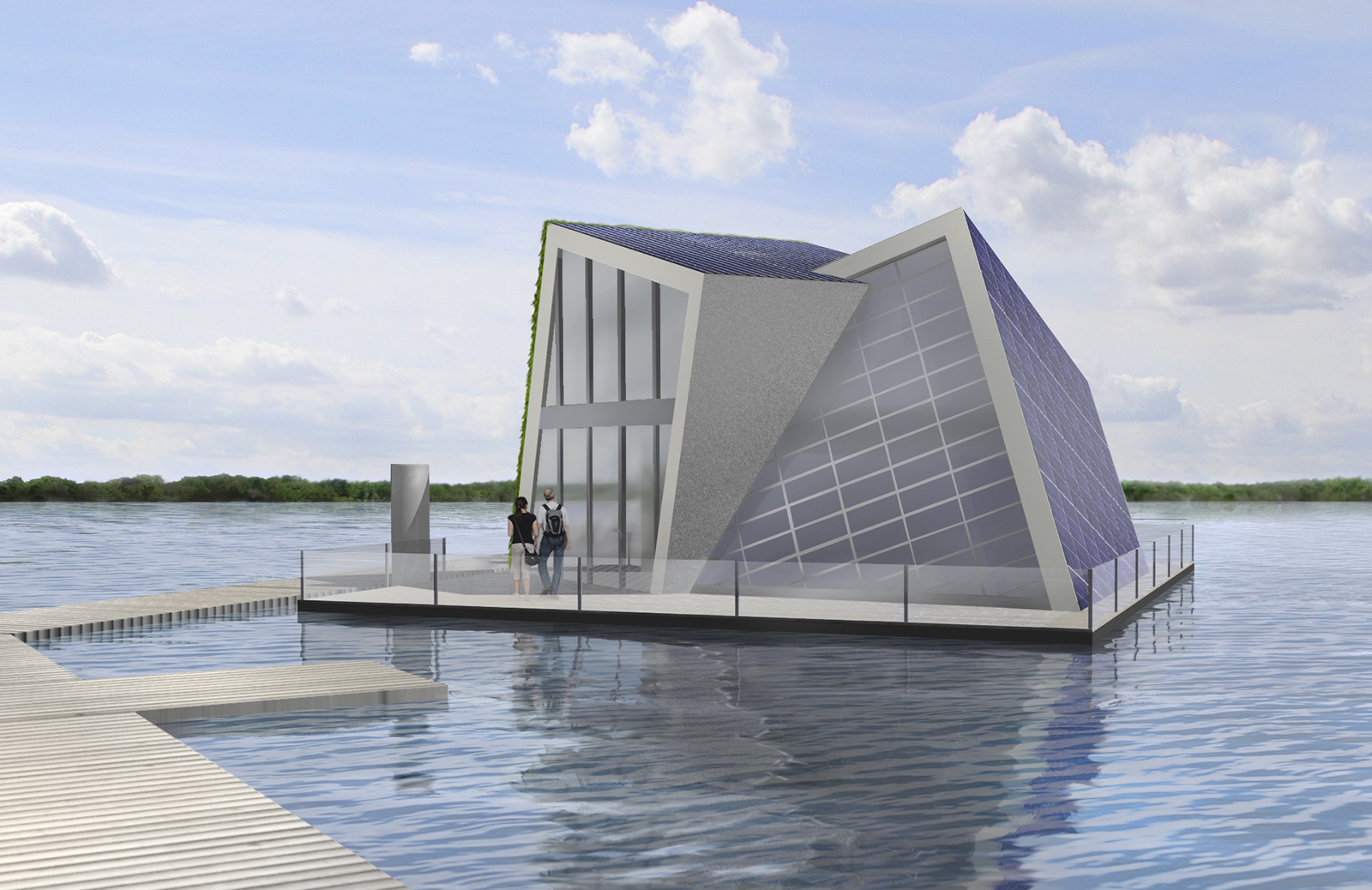Smart and Healthy Living
The “self-catering” houseboat
Life away from traffic noise and pollution – more and more people are drawn to water. Energy self-sufficient floating houses not only fulfill the criterion for this new lifestyle; they also provide a boost to the economy. Within the “autartec®” project, Fraunhofer IKTS and IVI are working with their partners on designing a houseboat that provides its own supply of water, electricity, and heat.


Floating houses are becoming increasingly popular in Germany – not only as vacation getaways, but also as permanent homes. The Lusatian Lake District is particularly suitable for such a lifestyle: with its 23 lakes and a surface area of 13,000 hectares, it is the largest artificial lake district in Europe. The region, which is located between eastern Saxony and southern Brandenburg, was dominated for decades by open-cast lignite mining. Many of these lakes are cut off from infrastructure such as water and energy supply. Now, it is planned to boost the region’s attractiveness with the construction of houseboats. This includes the Lusatia- based project autartec®, in which the Fraunhofer Institutes for Transportation and Infrastructure Systems IVI and Ceramic Technologies and Systems IKTS are involved. Together with partners from the region, including medium-sized enterprises, industry, and the technical universities of Dresden and Brandenburg, they are working on building an energy-independent floating house on Geierswald Lake, northwest of Hoyerswerda.
Energy-independent living on the water
The house, which is located on a 13 × 13 m² steel pontoon, extends over two levels: the first floor has a living space of 75 m² and the second floor an additional 34 m². The 15 m² patio overlooks the entire lake. Modern architecture and structural engineering meets high-efficiency system and building equipment. Solar cells are integrated into the building’s shell and rechargeable lithium-polymer batteries store the accumulated energy. To save space, the battery systems, which were developed by Fraunhofer VI, are built into the textile-reinforced concrete walls or the staircases. A salt-hydrate fireplace provides cozy heat on icy winter days: a water-filled tank containing salt hydrates is located directly above the fireplace. The salt hydrates melt, absorbing the heat. Once the salt hydrates have become completely liquefied, the heat energy can be stored almost indefinitely. Wirelessly controlled crystallization activators release the heat again when it is required. However, a fireplace is not enough to keep the house warm during the winter. This is where zeolite storage in the pontoon can help. The zeolite minerals are dried during the summer – a purely physical process in which heat is stored. In winter, moist air is enough to make the storage unit release heat.
The adiabatic cooling system ensures that the temperature remains cool in summer. Unlike conventional air-conditioning systems, this system does not require any electrical energy; it makes use of the evaporation caused by air and water. One side of the house is covered with vegetation and kept moist; the resulting evaporation cools the building’s shell.
All under one roof
To supply water in the houseboat, researchers at Fraunhofer IKTS are developing a closed circulation system for drinking and service water. The scientists make use of a combination of ceramic membranes and various electrochemical and photocatalytic processes. While waste water on land is usually treated biologically, this process is not possible in a floating house. Physical and chemical methods provide a solution: ceramics offer very efficient means of combining processes, such as photocatalysis, electrochemistry, and filtration in a confined space. Other materials, such as steel or plastic, would fail if they were subjected to such aggressive processes. The technology for the circulation system will be housed in the pontoon. This means that everything is housed under one roof.
Last modified: